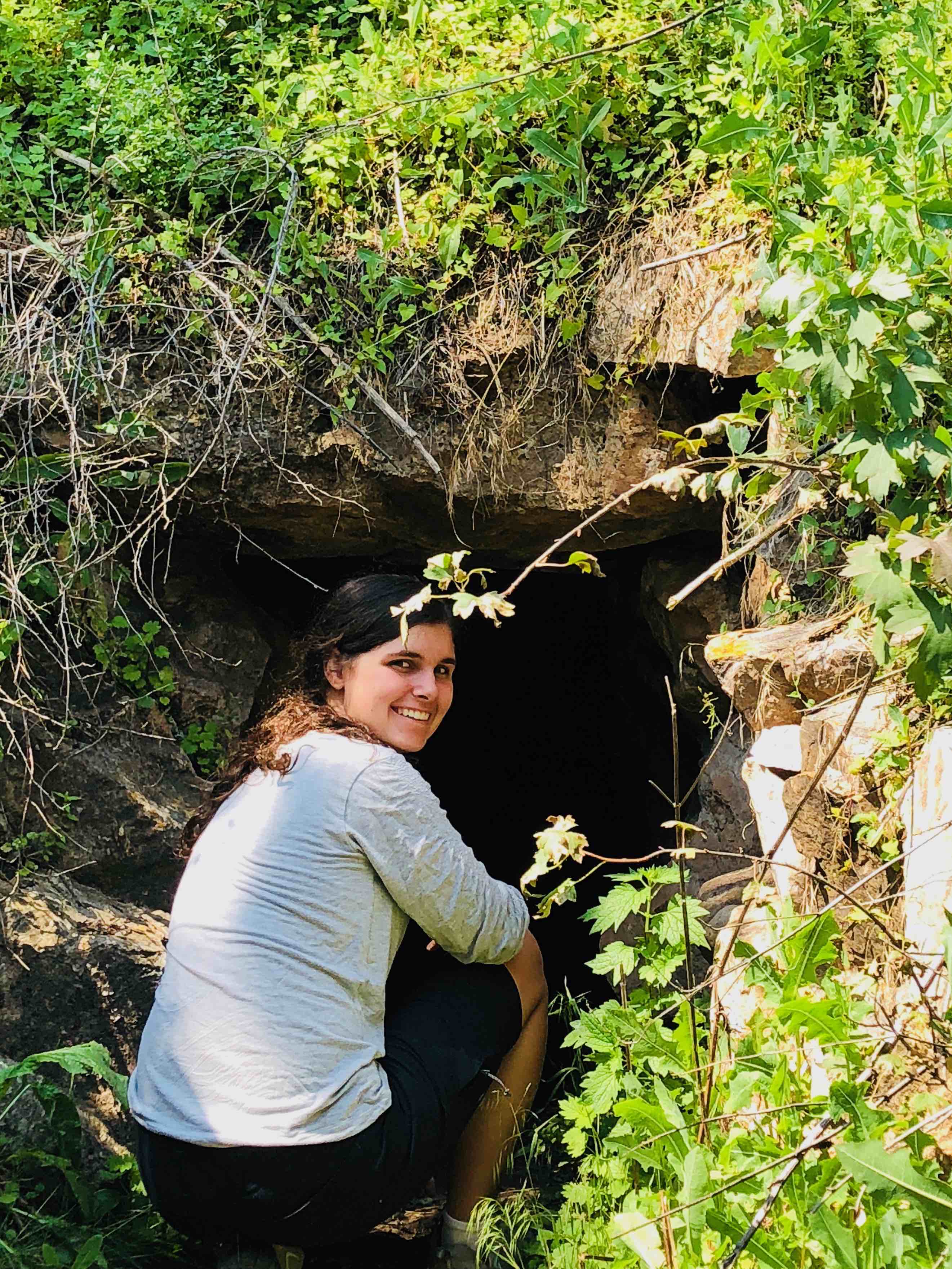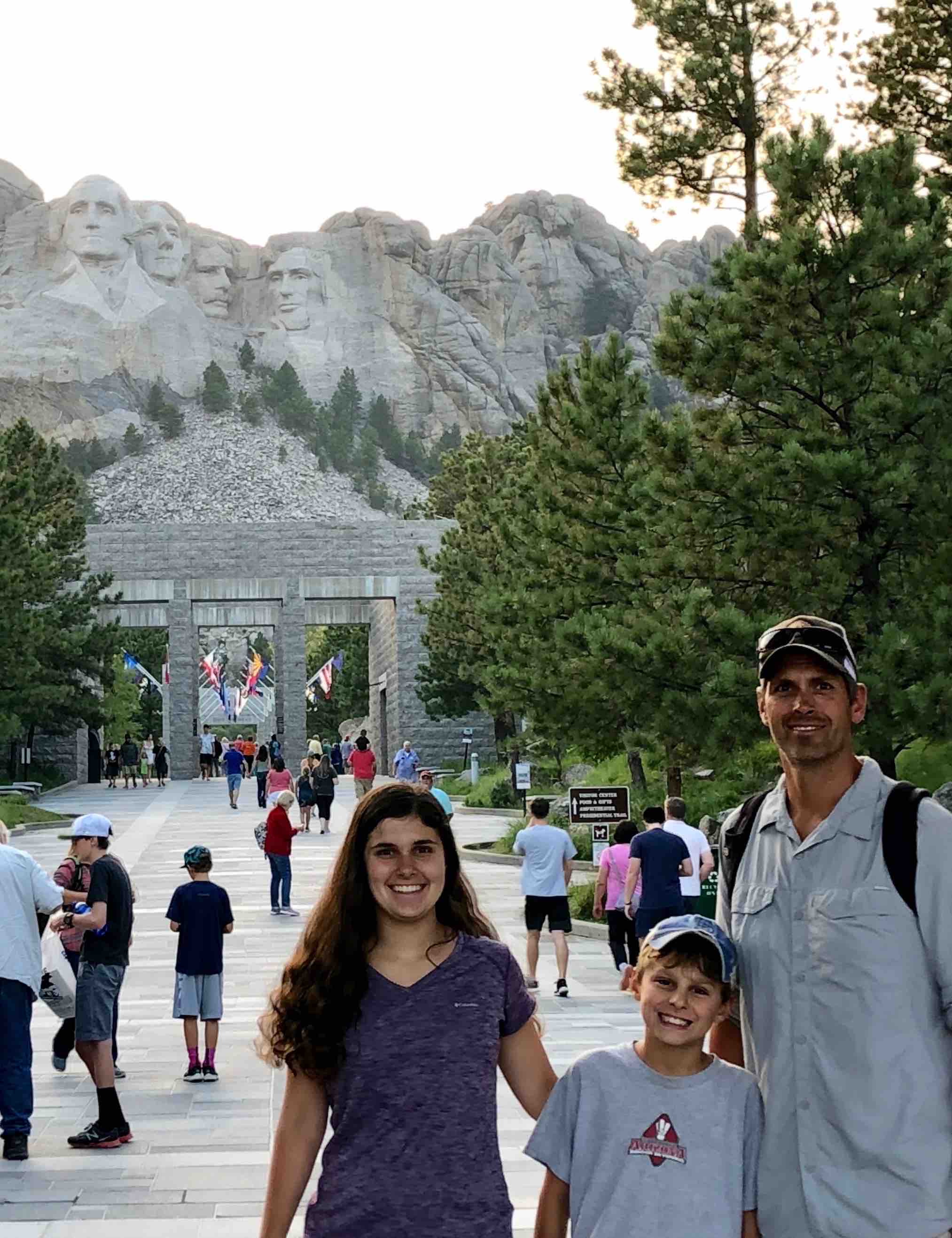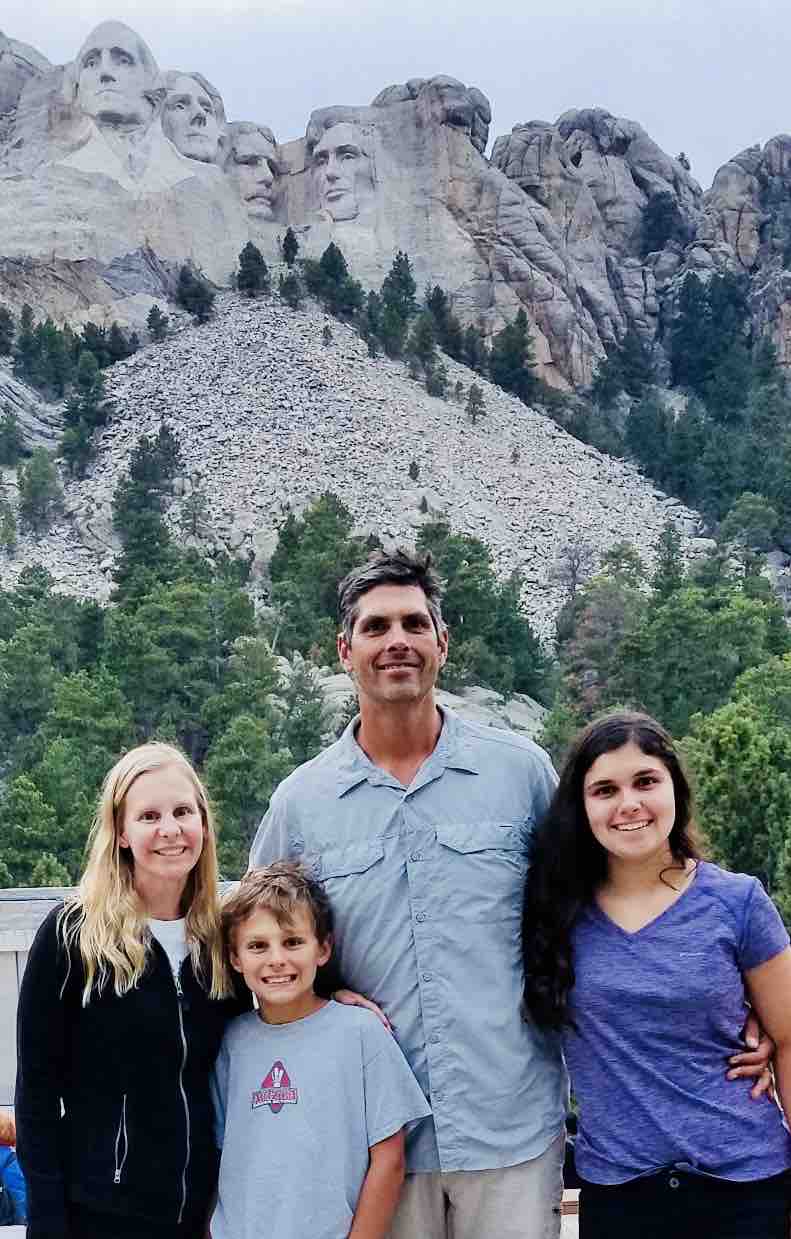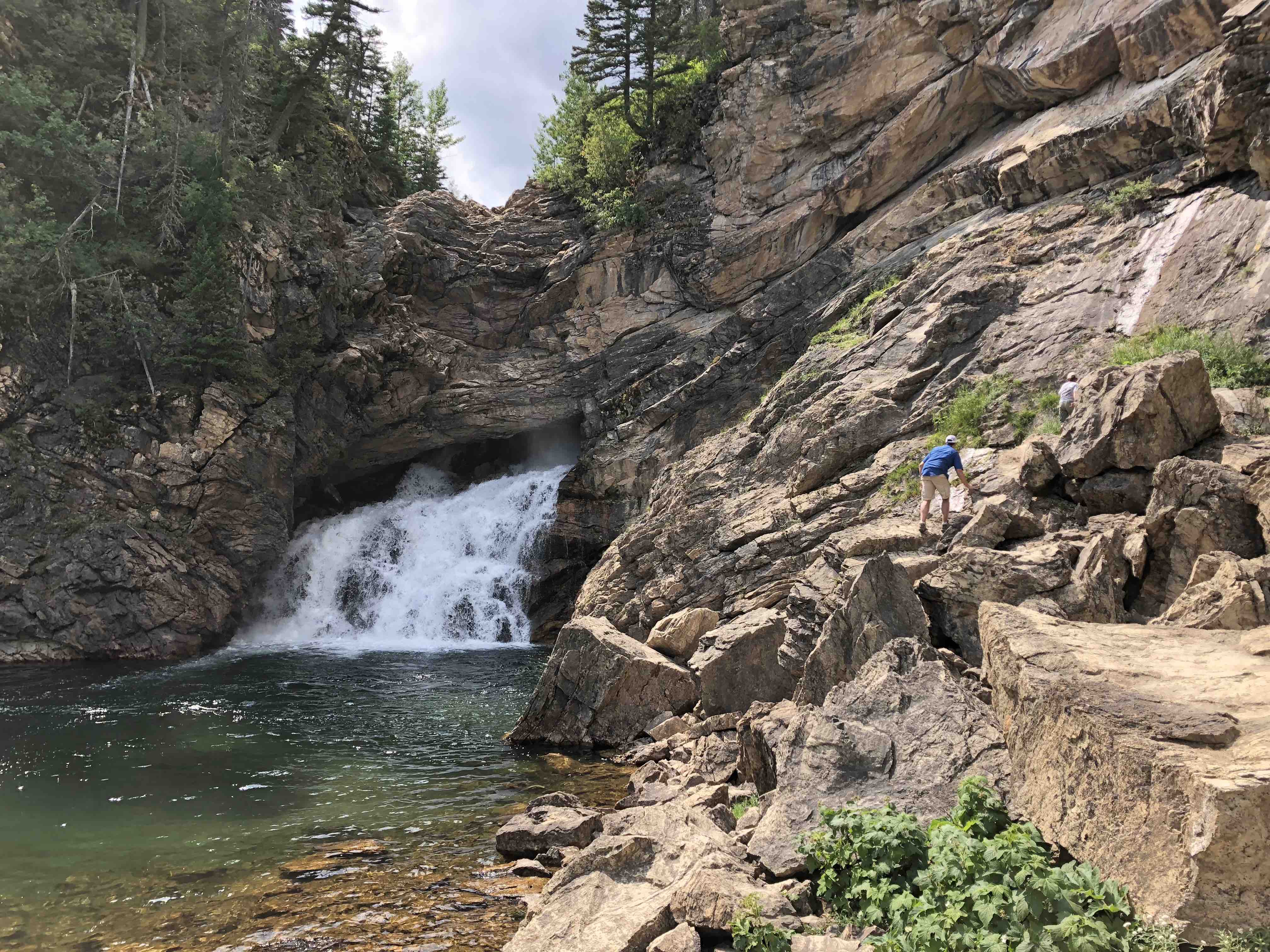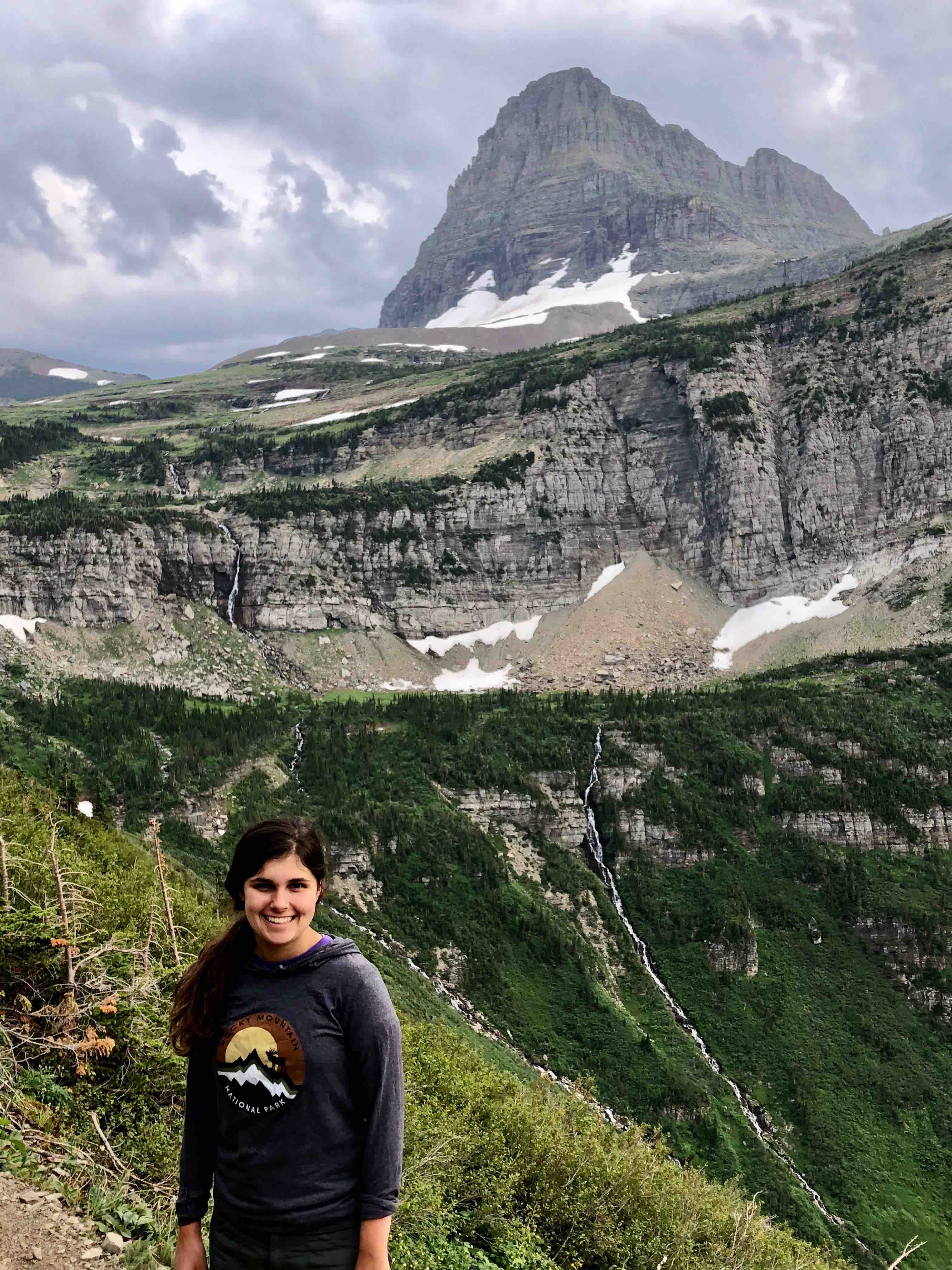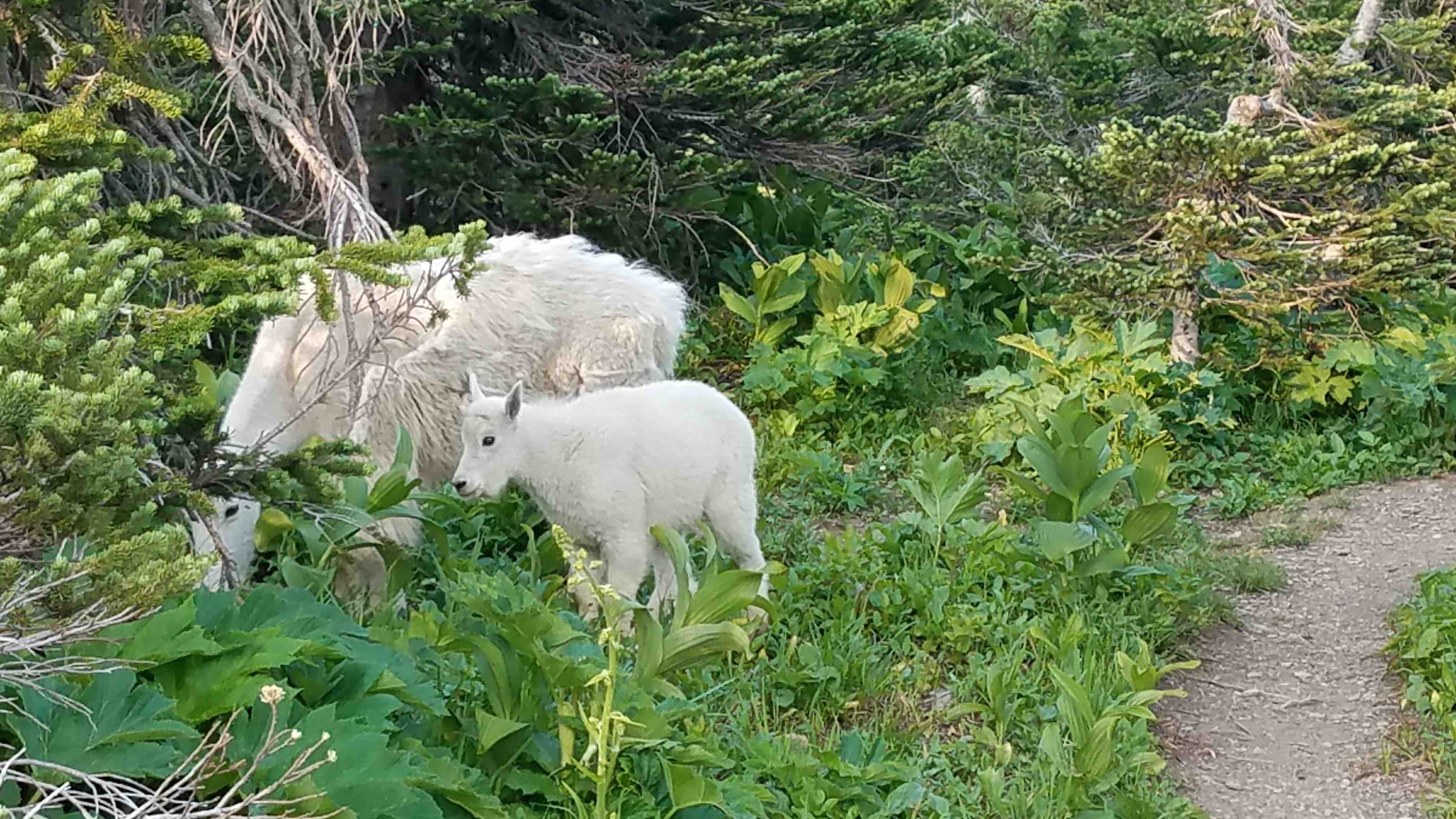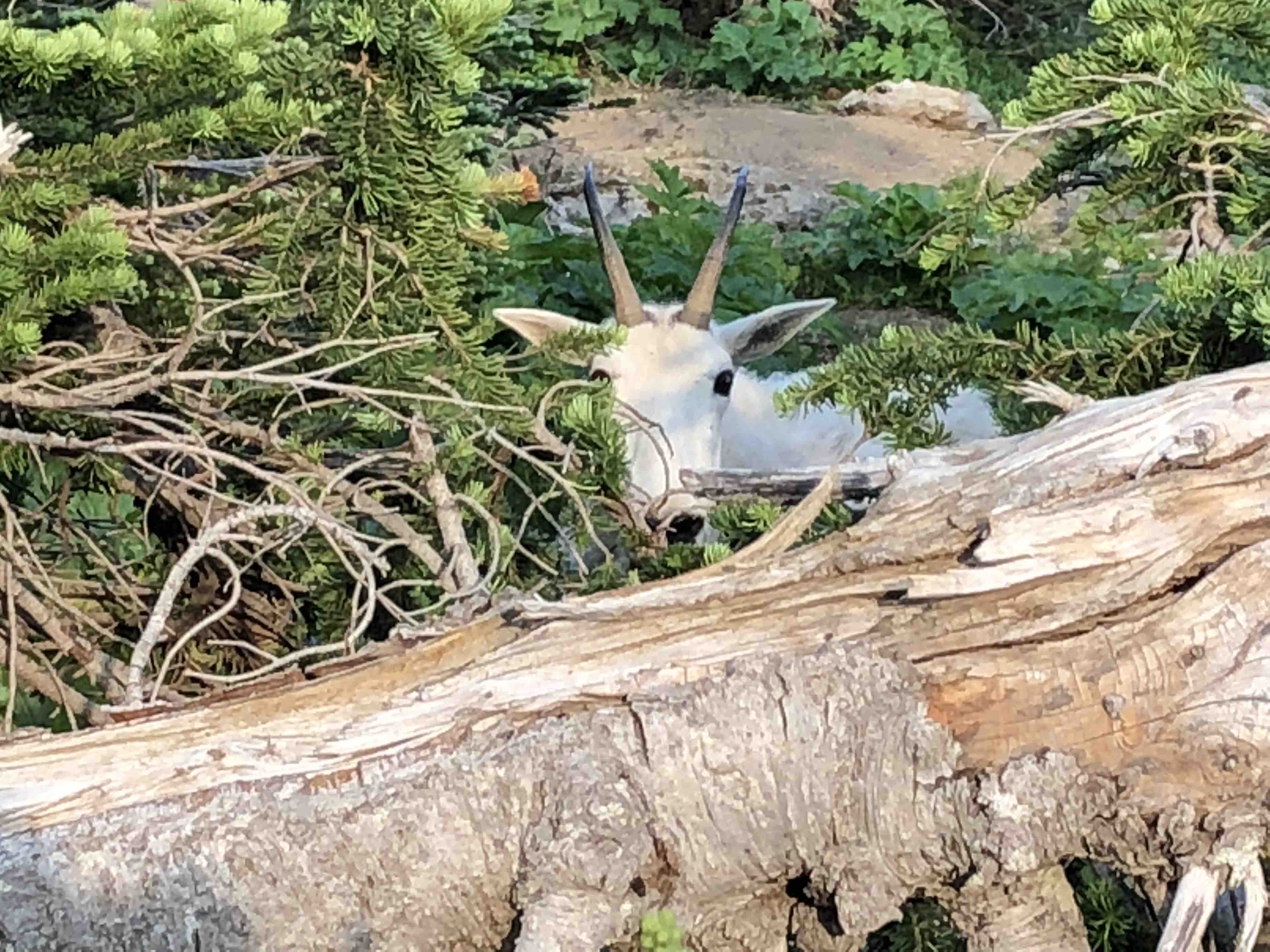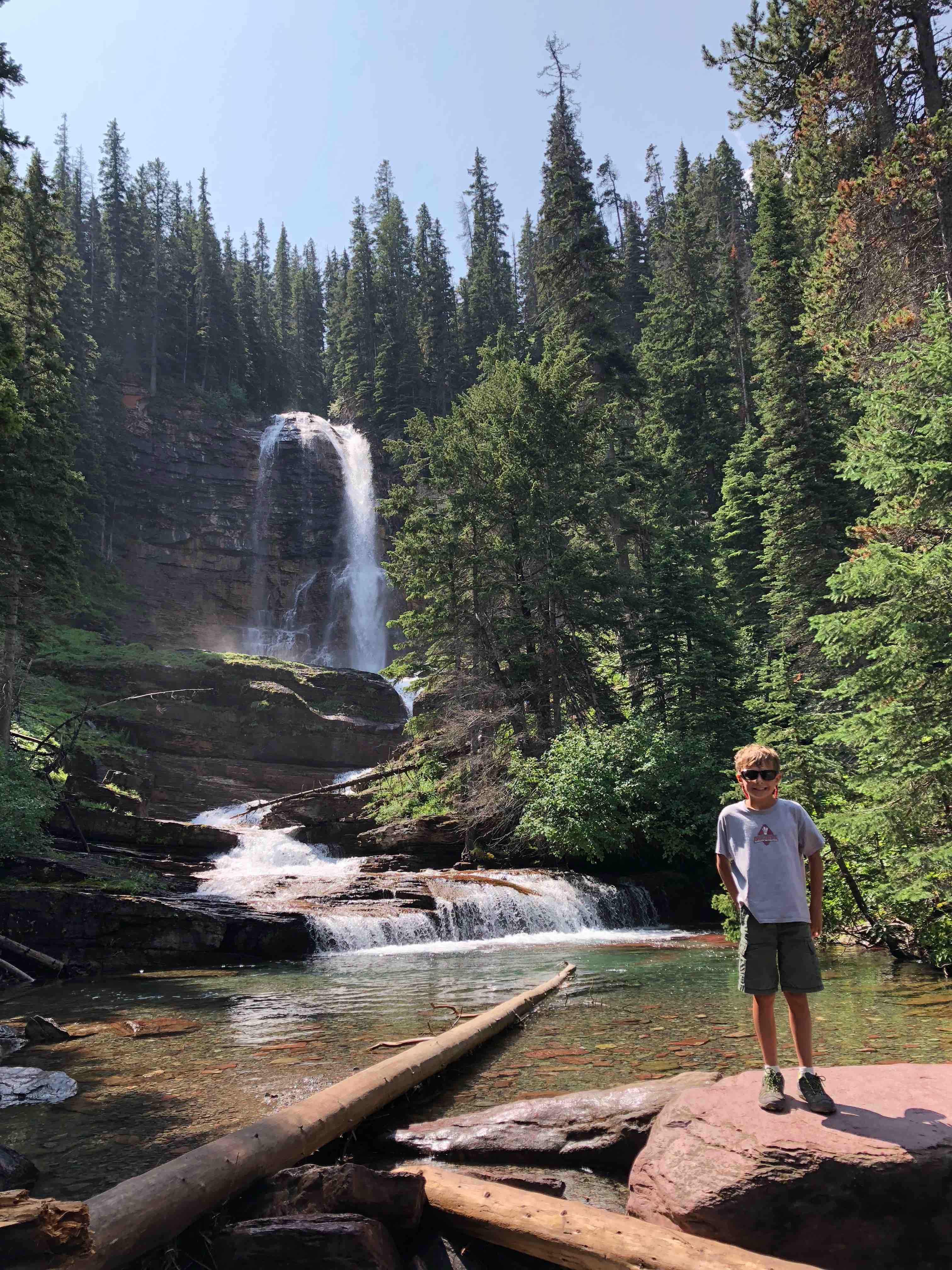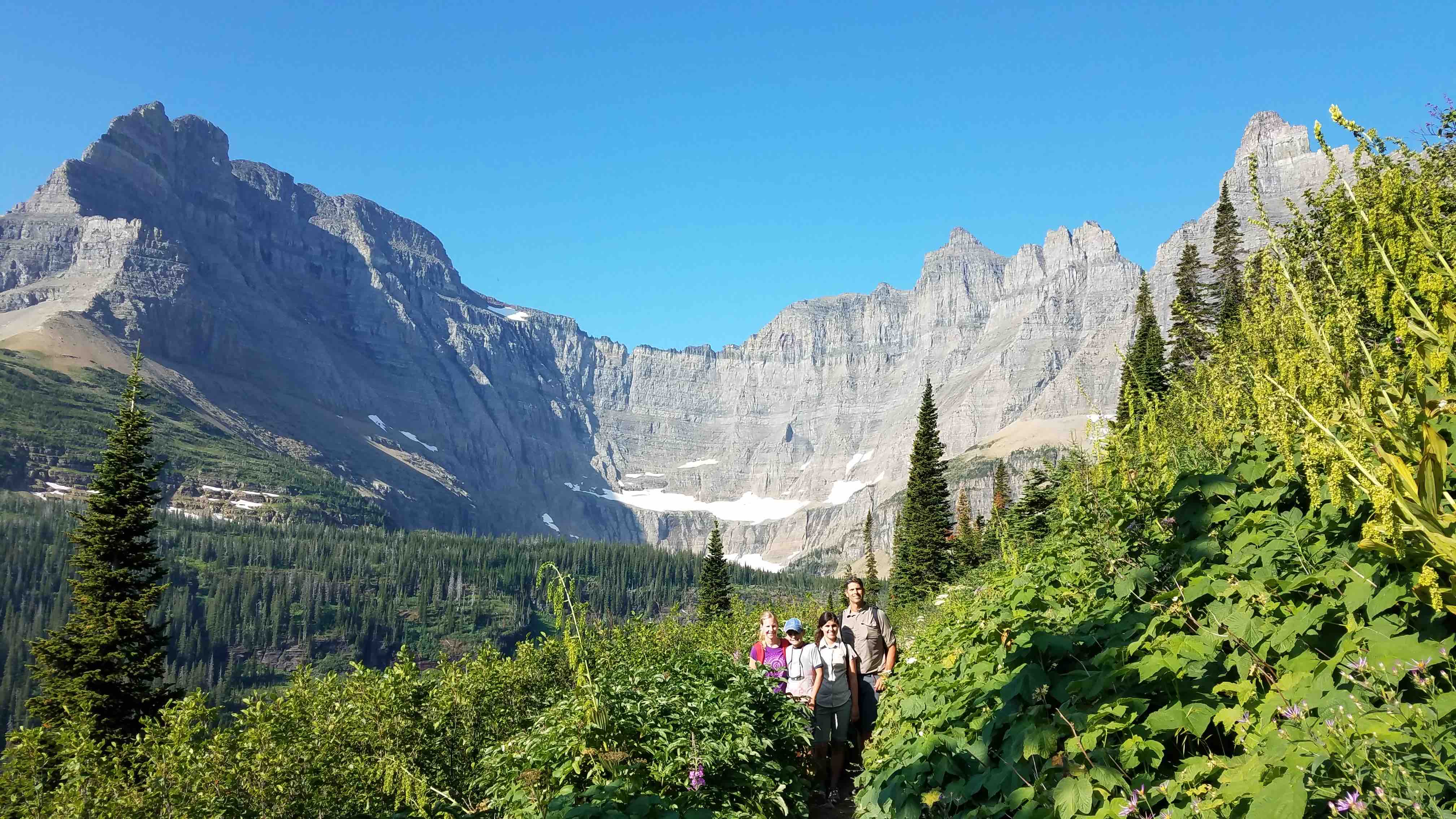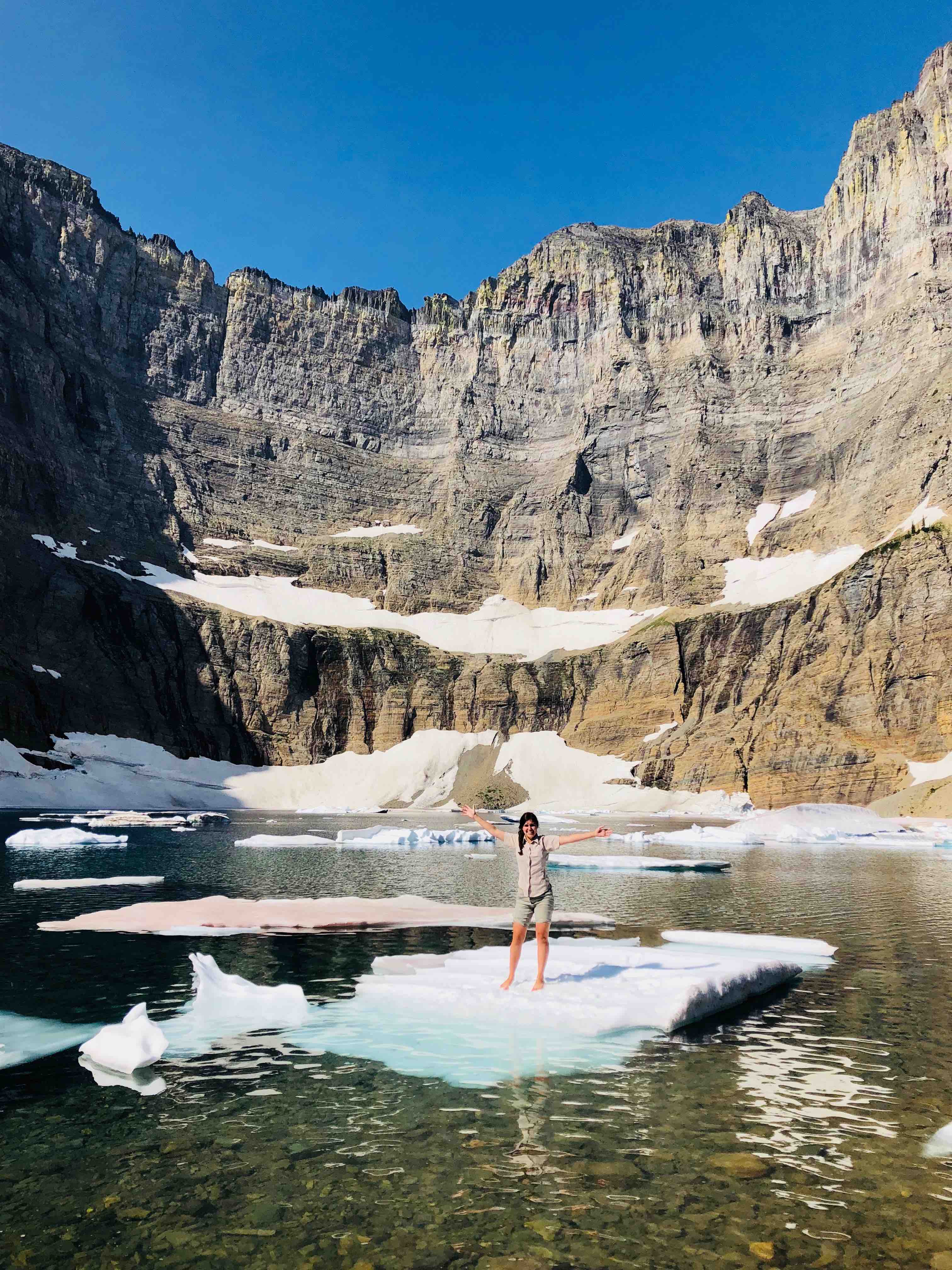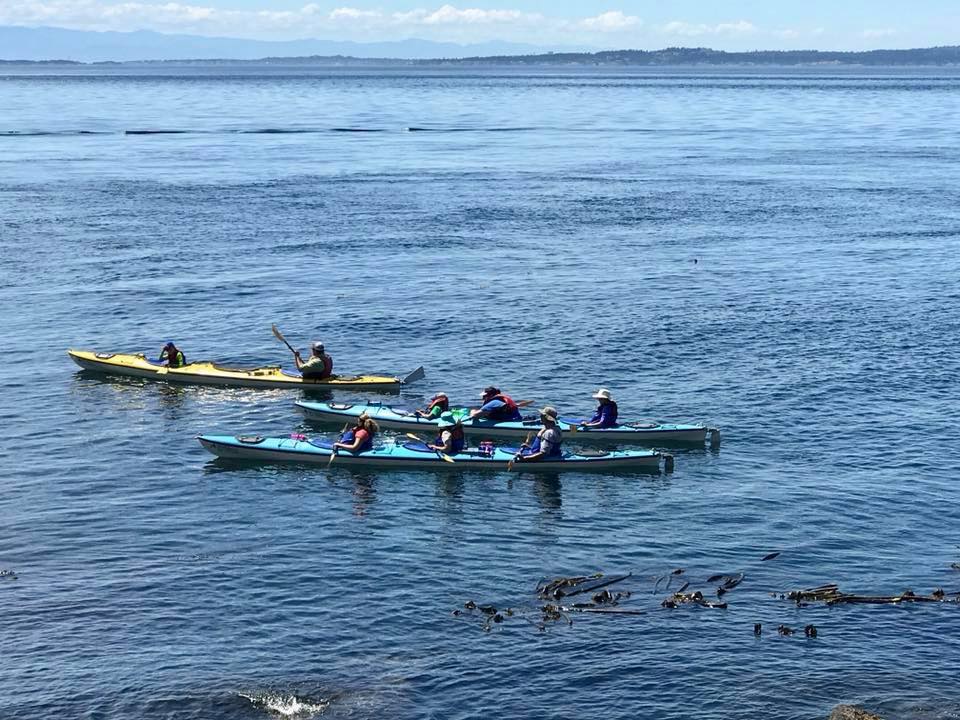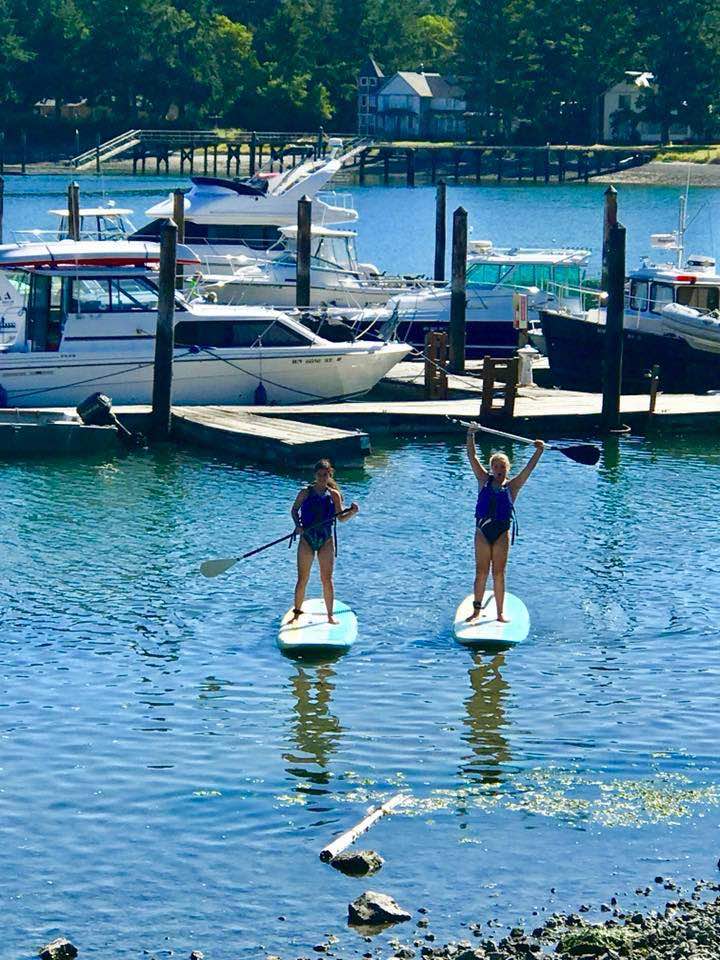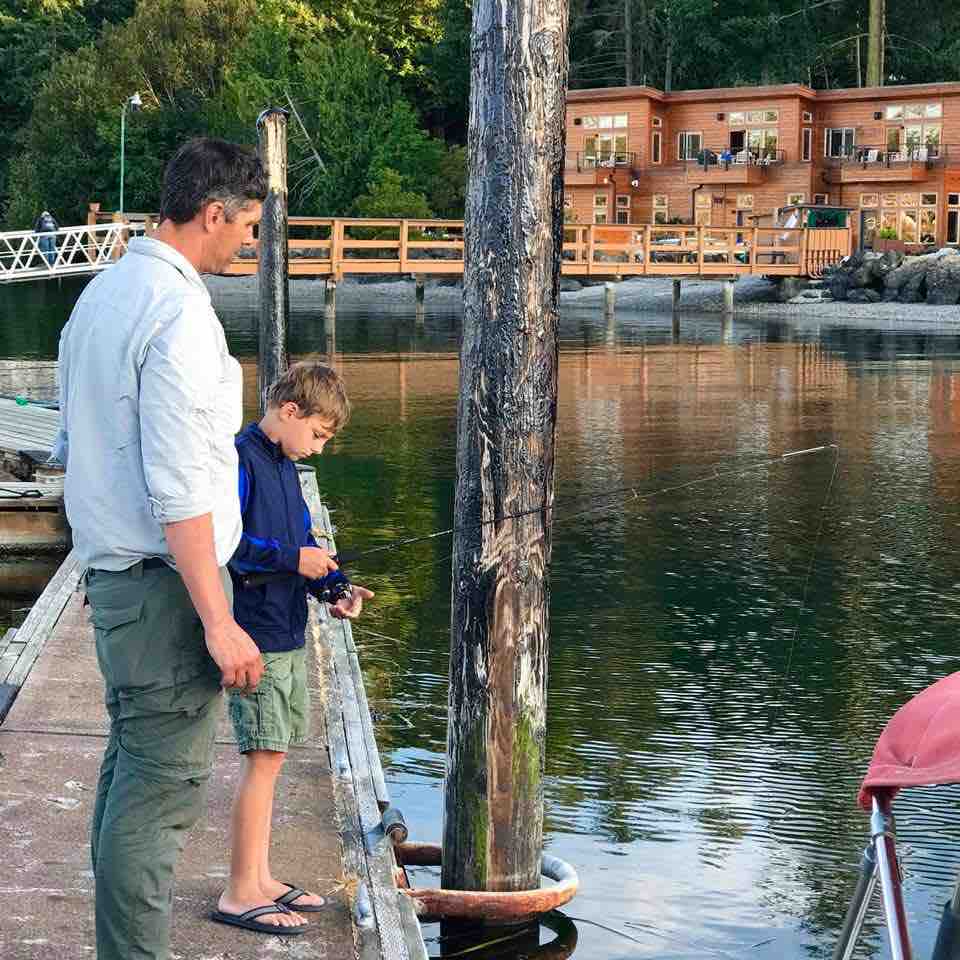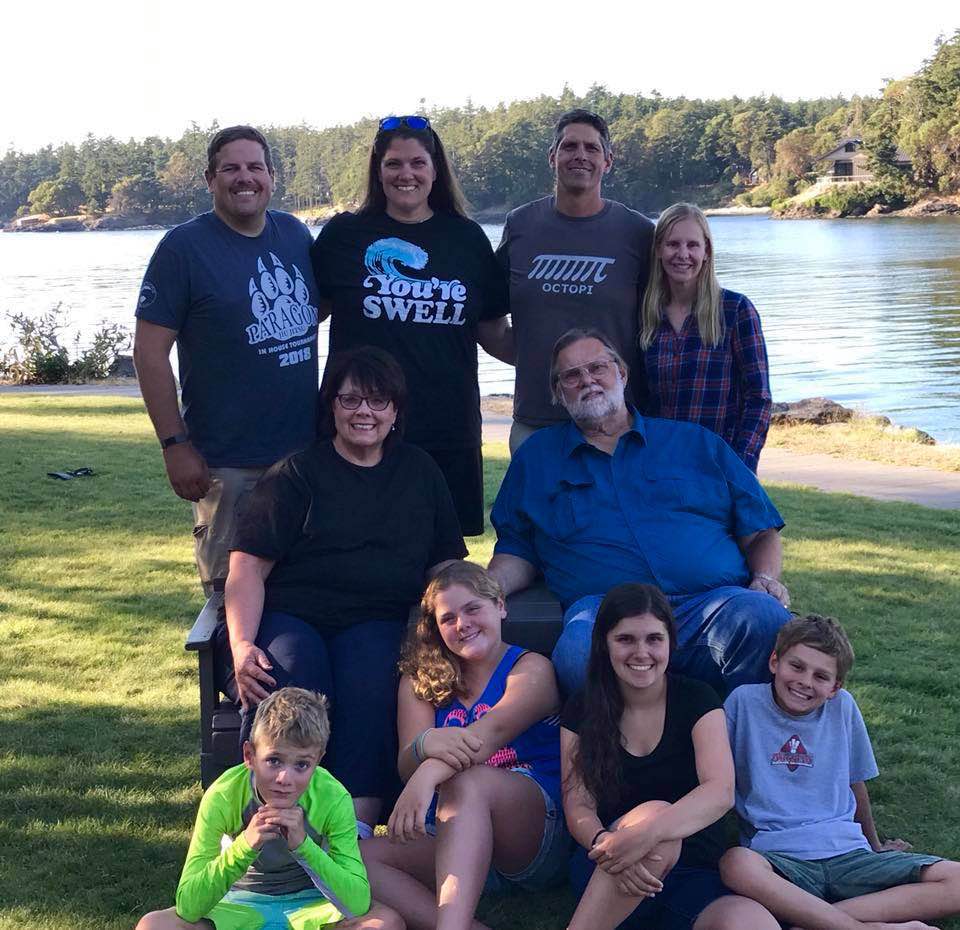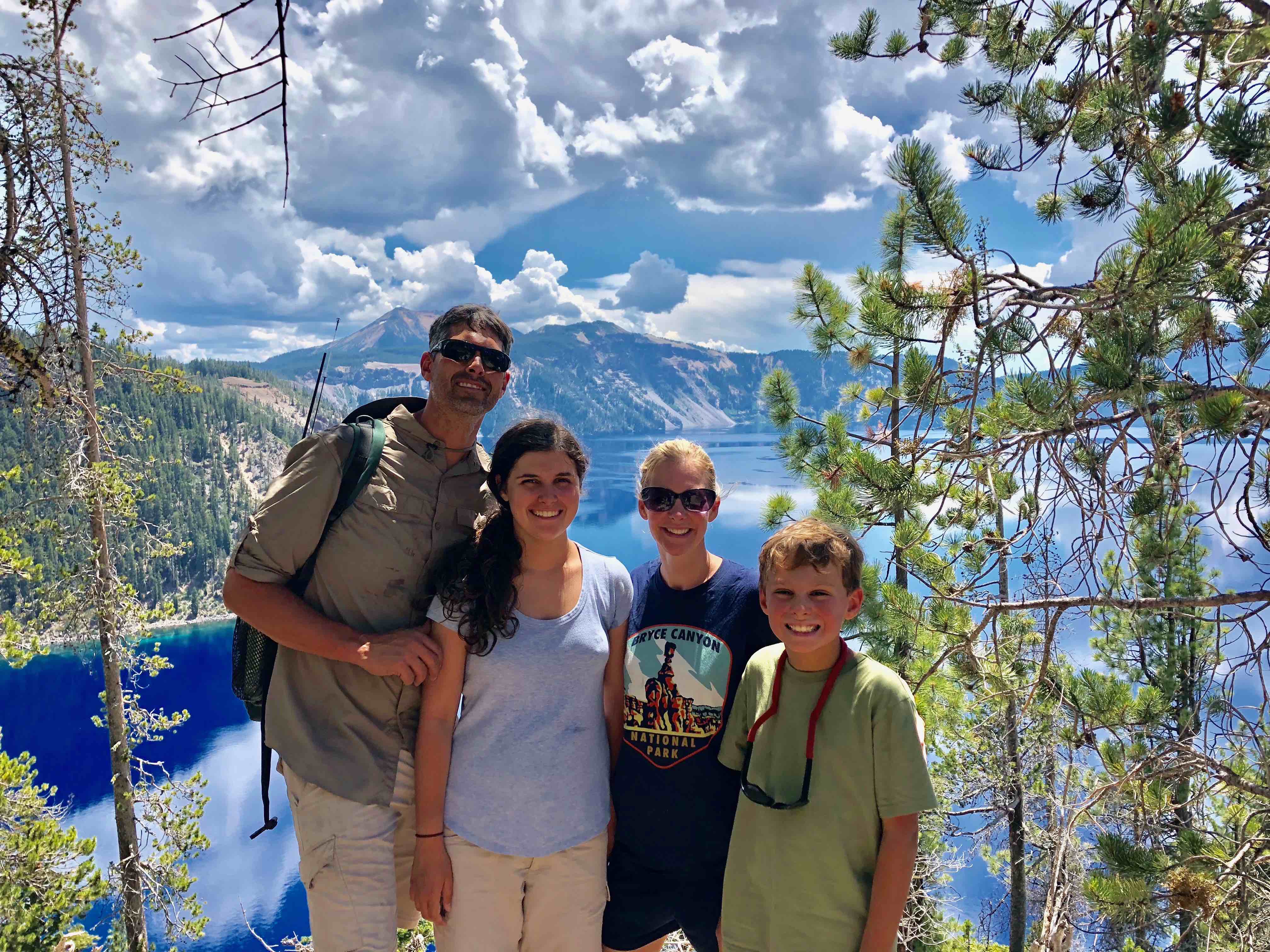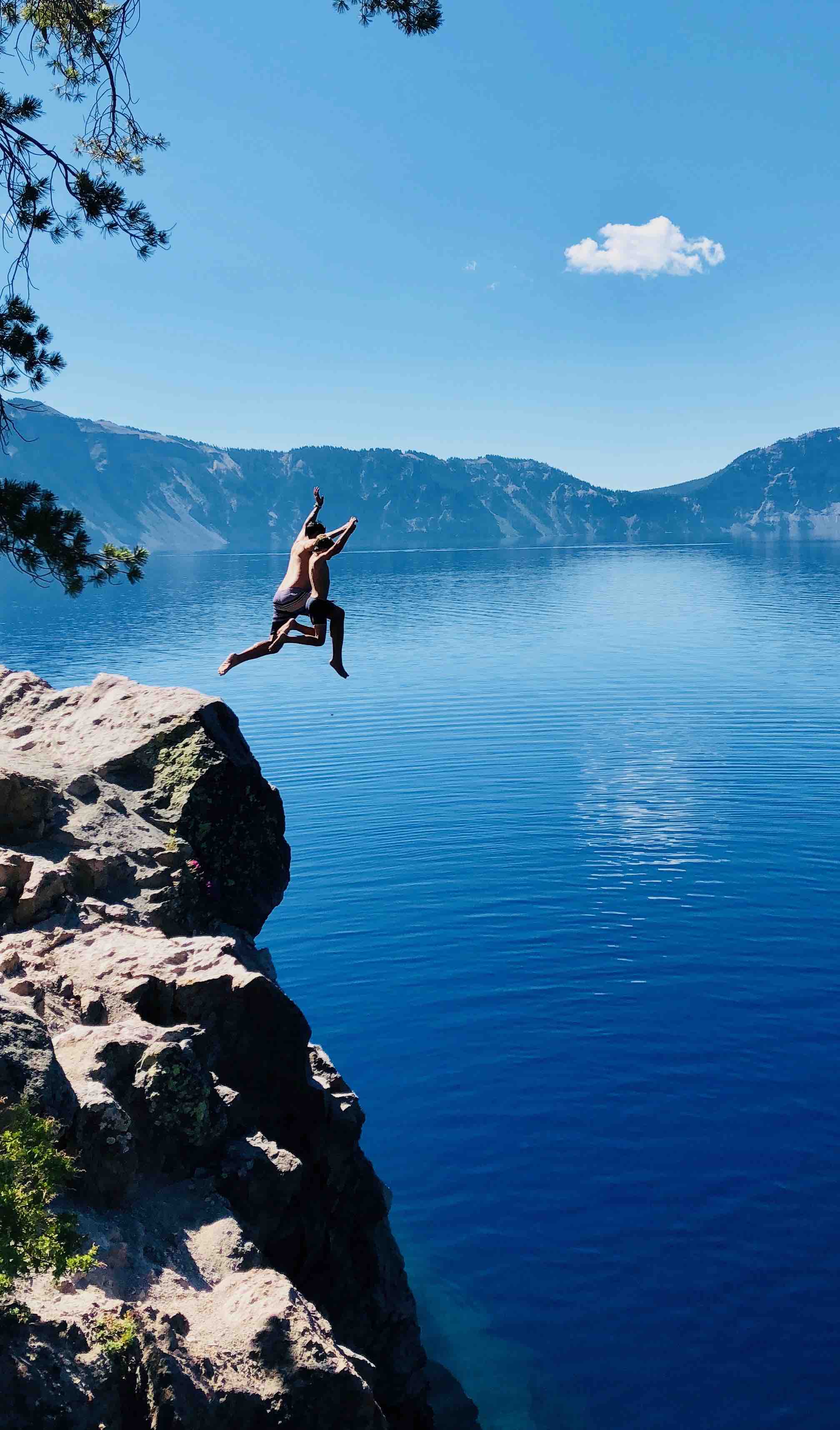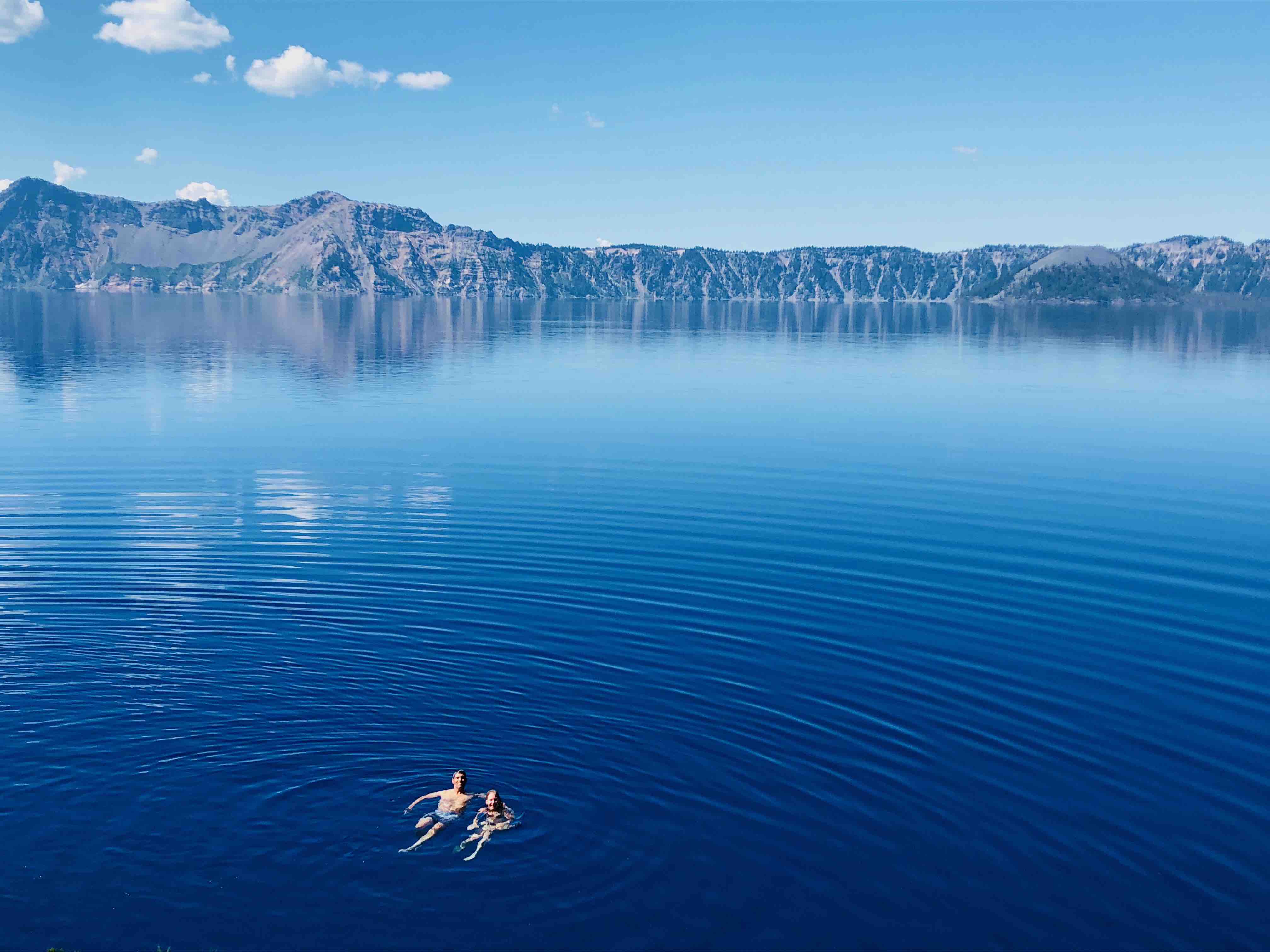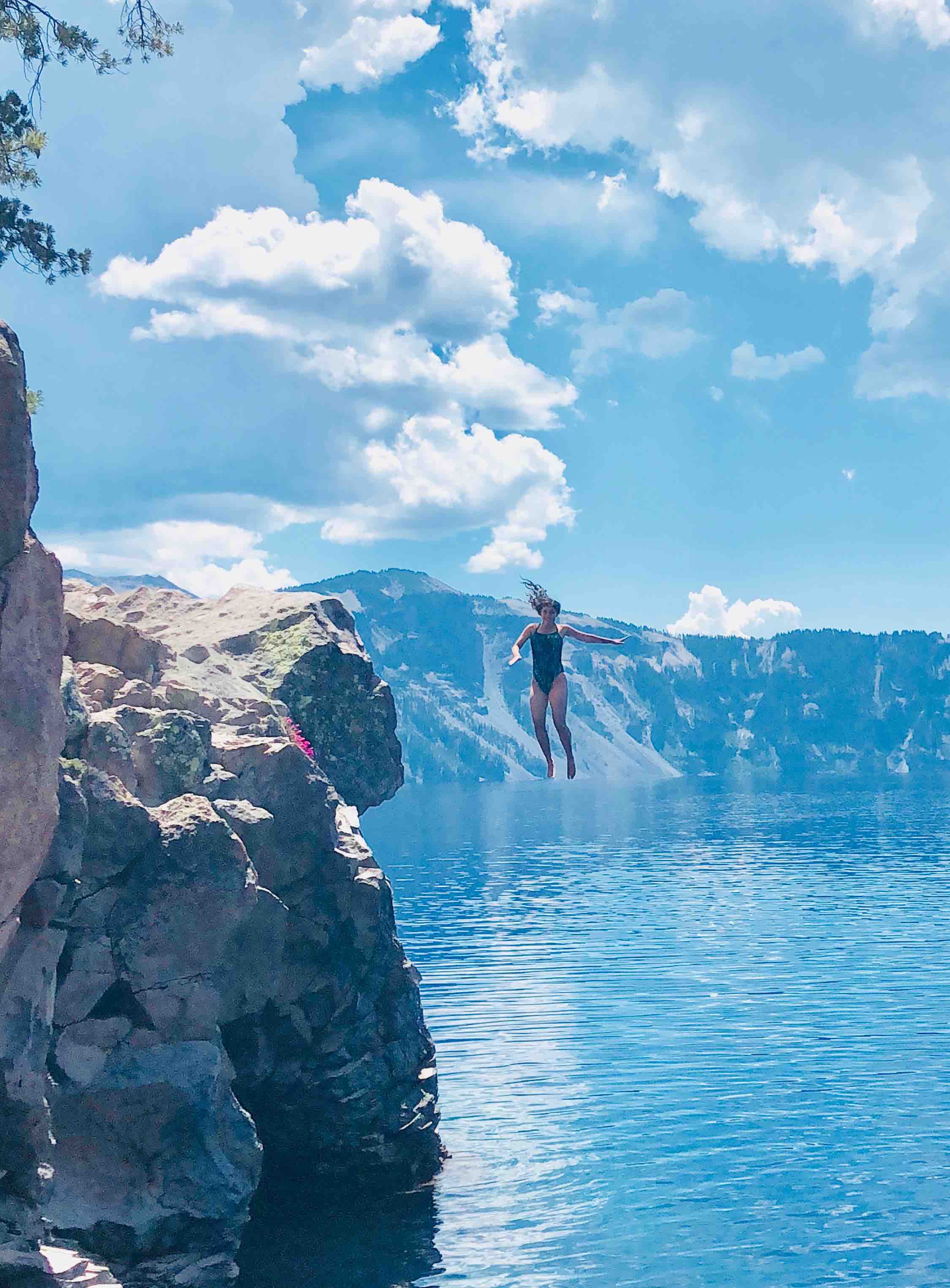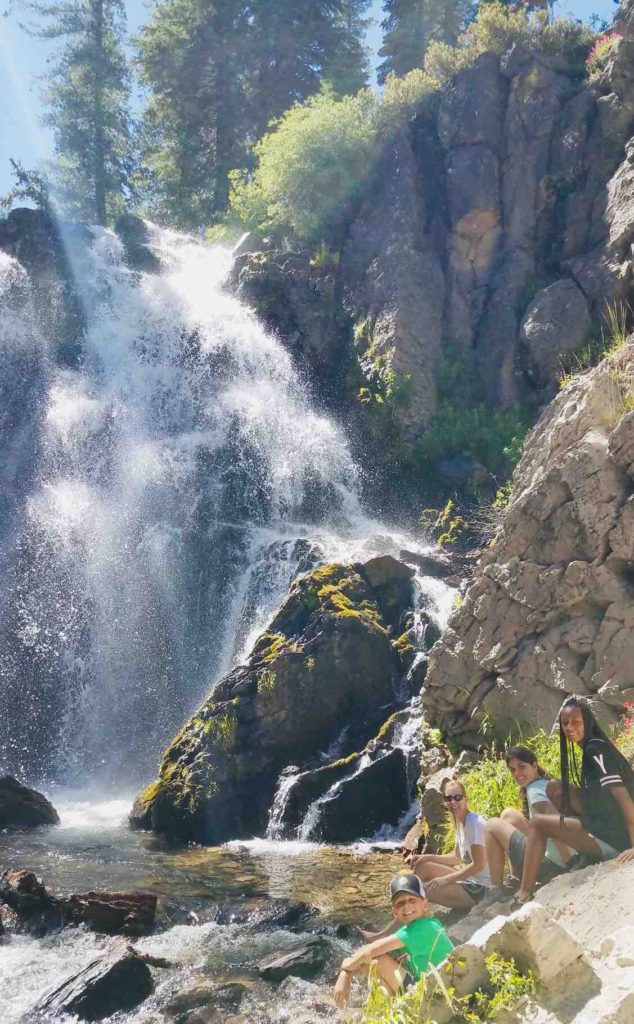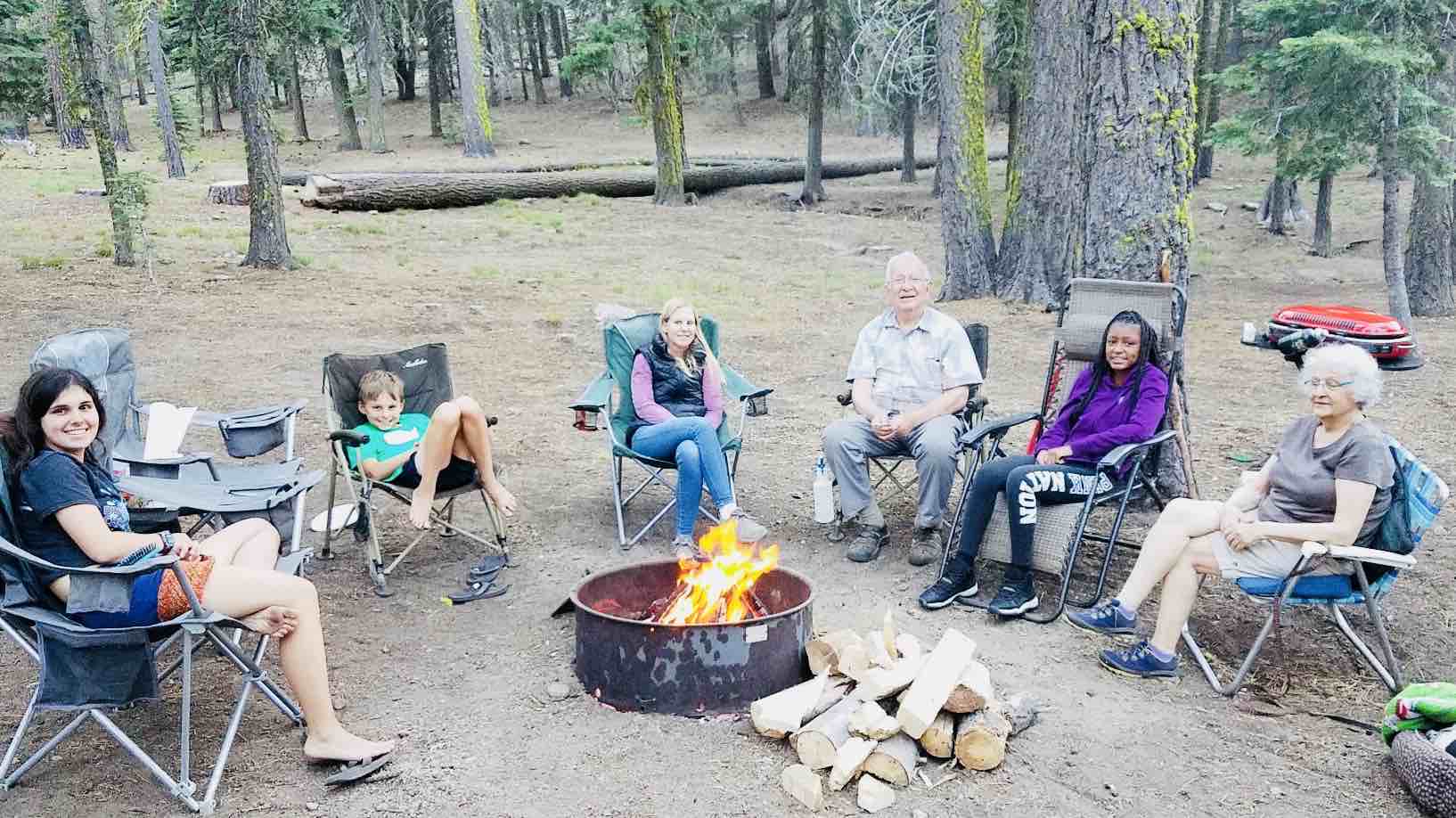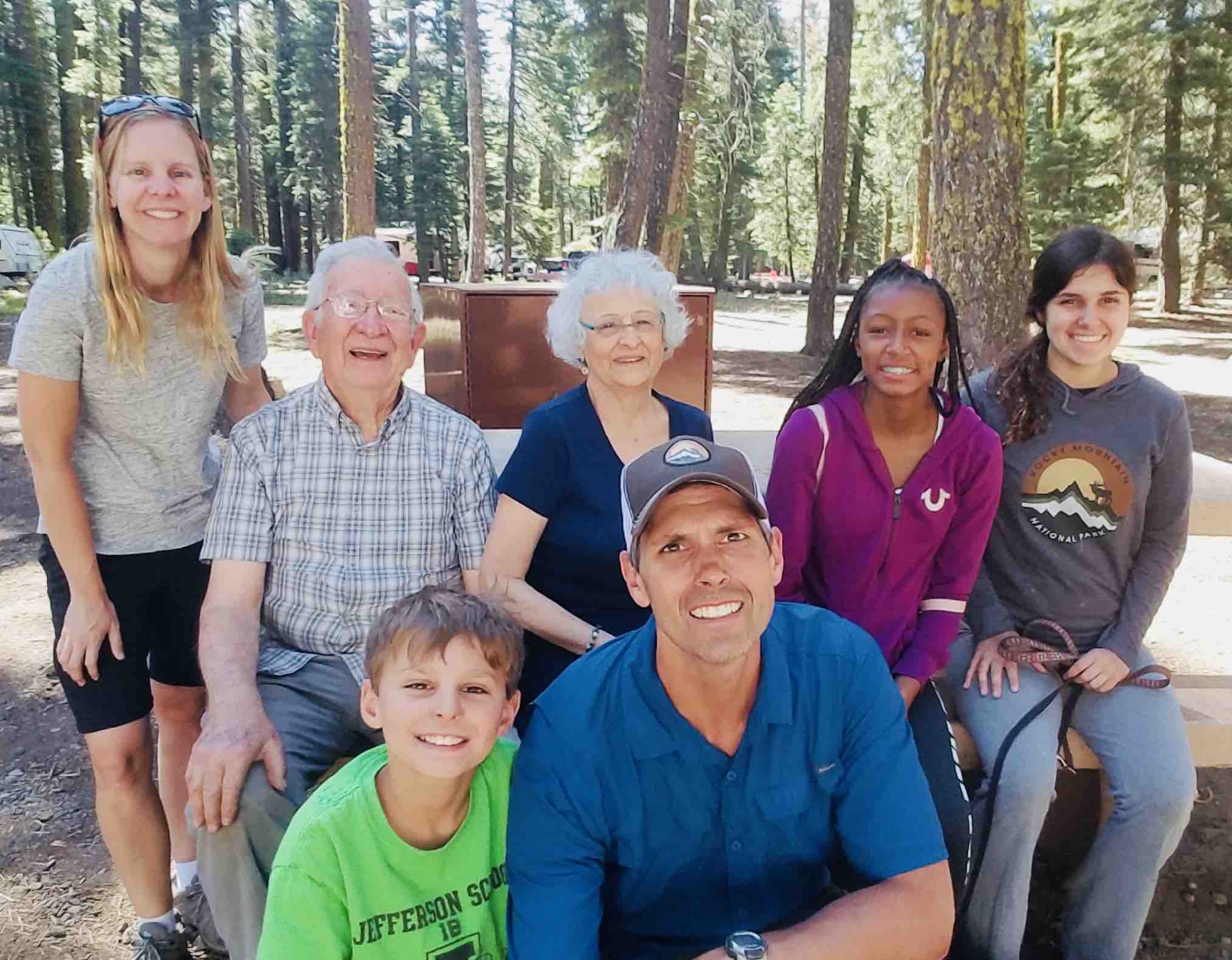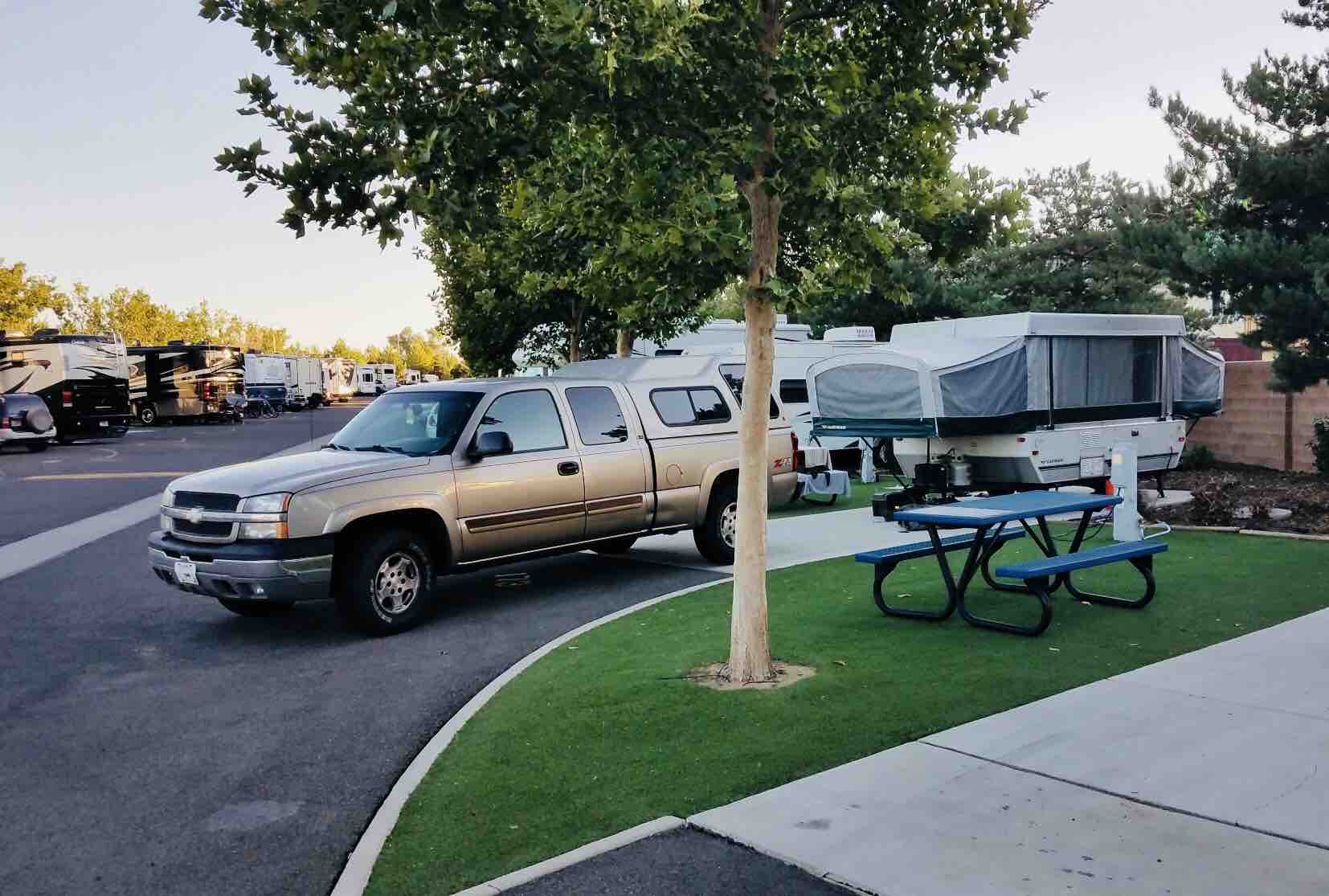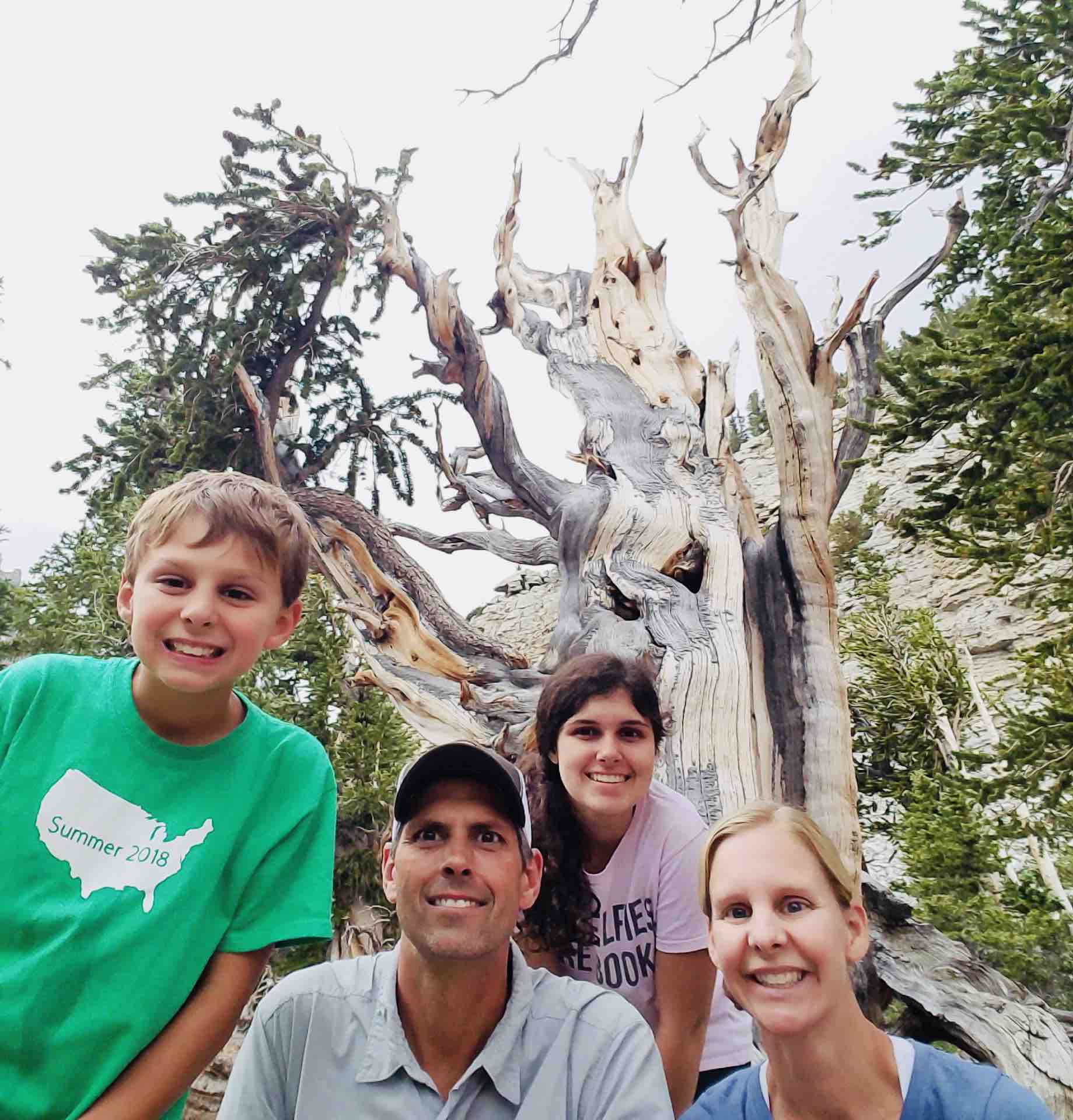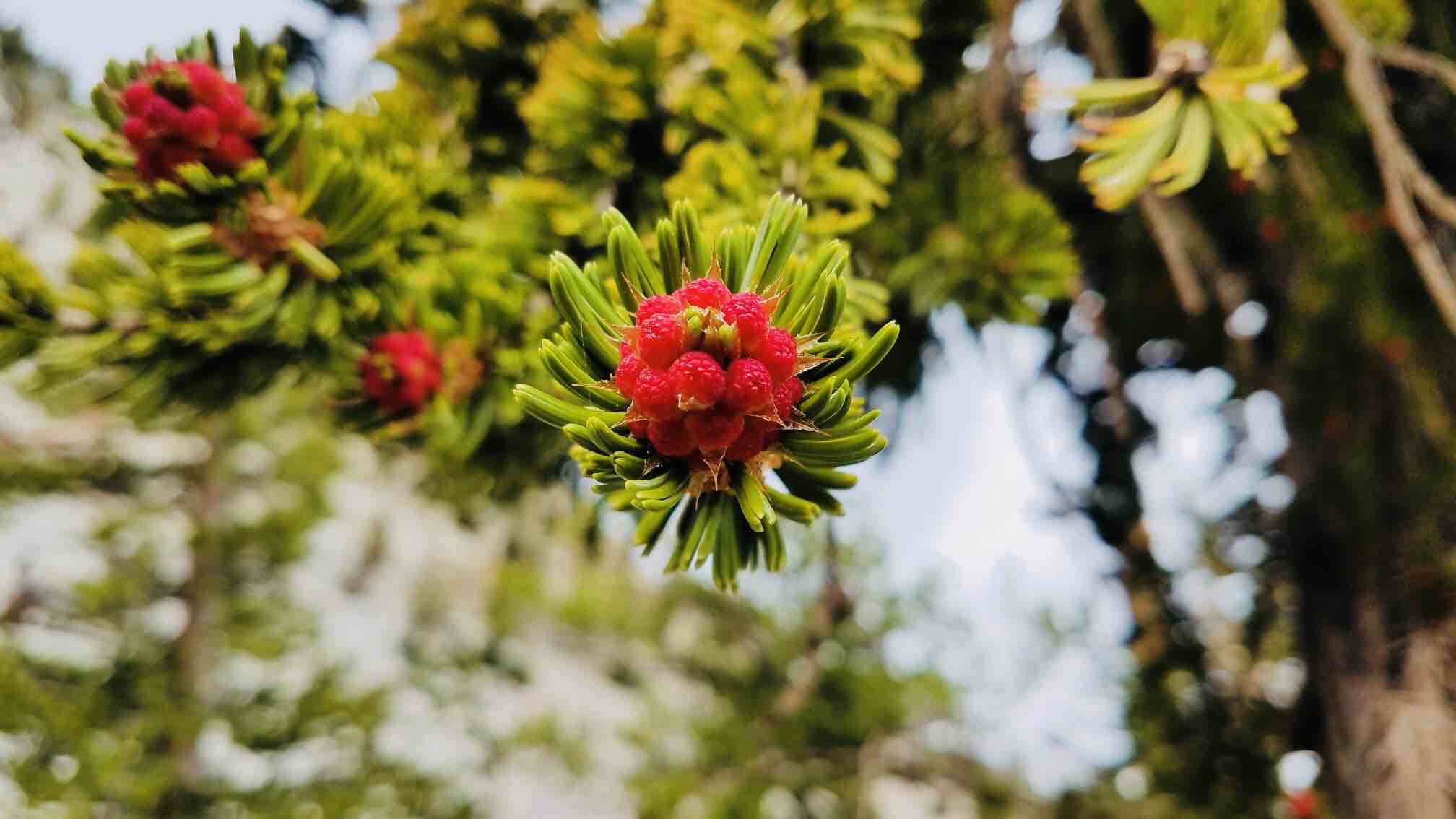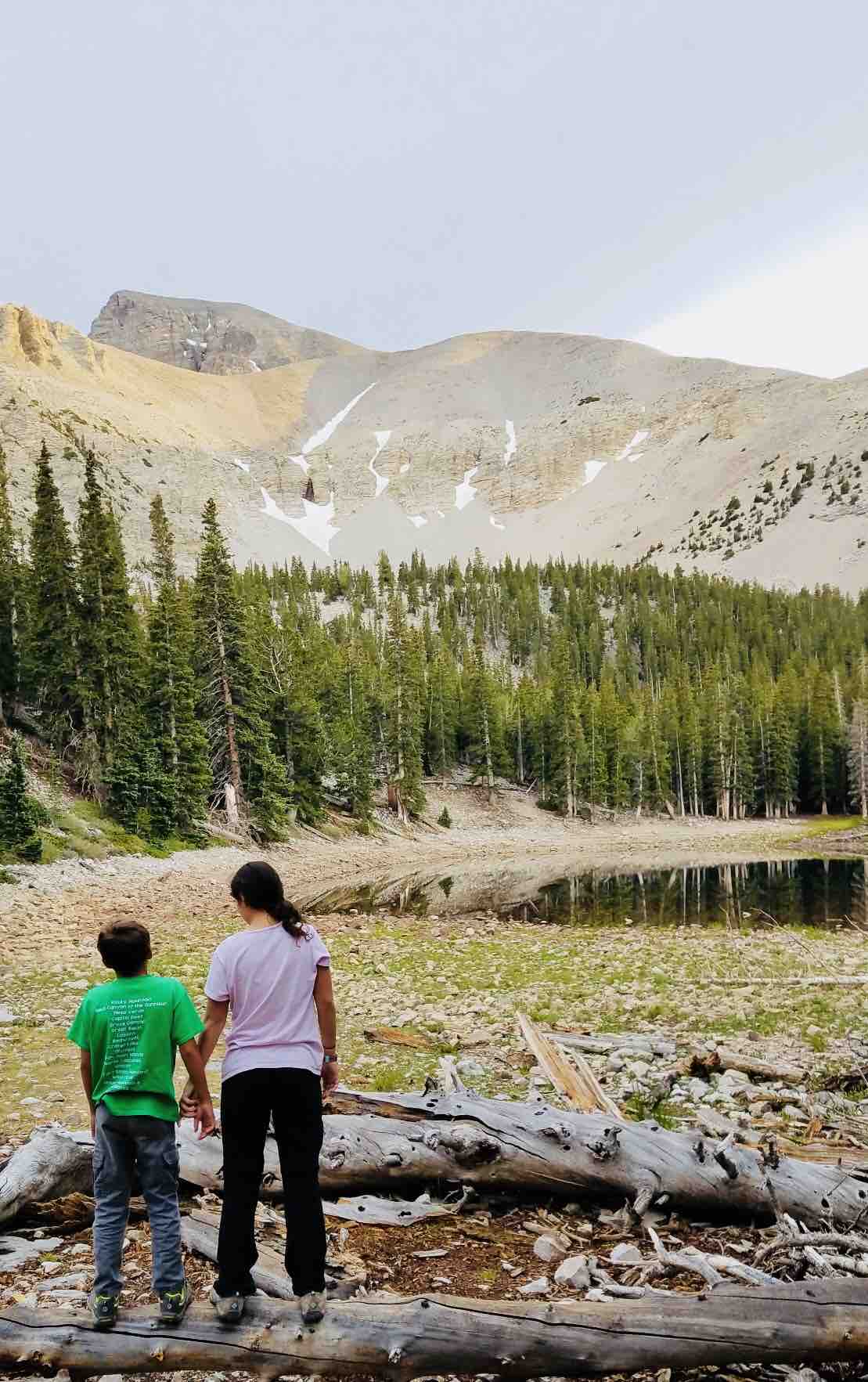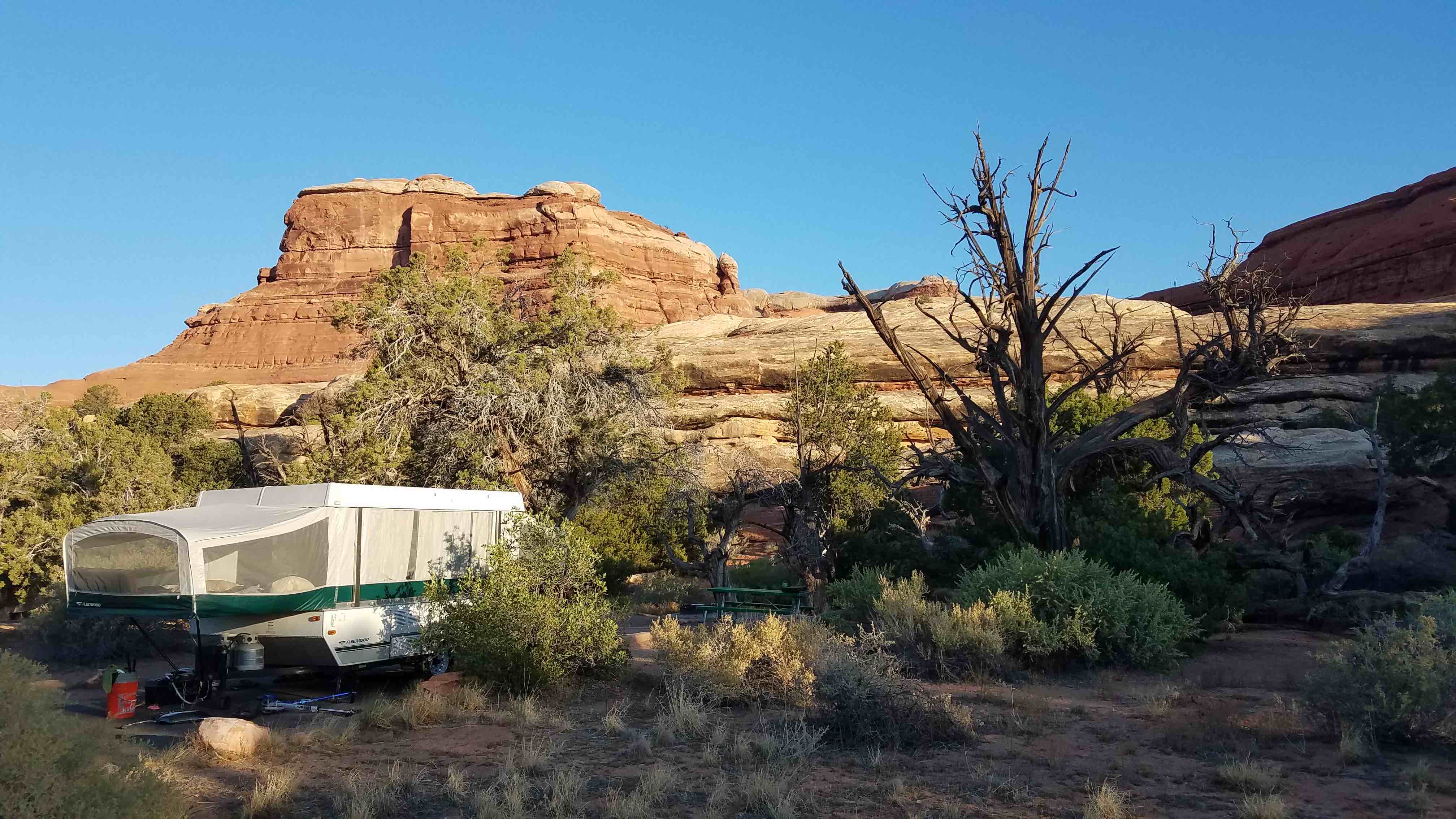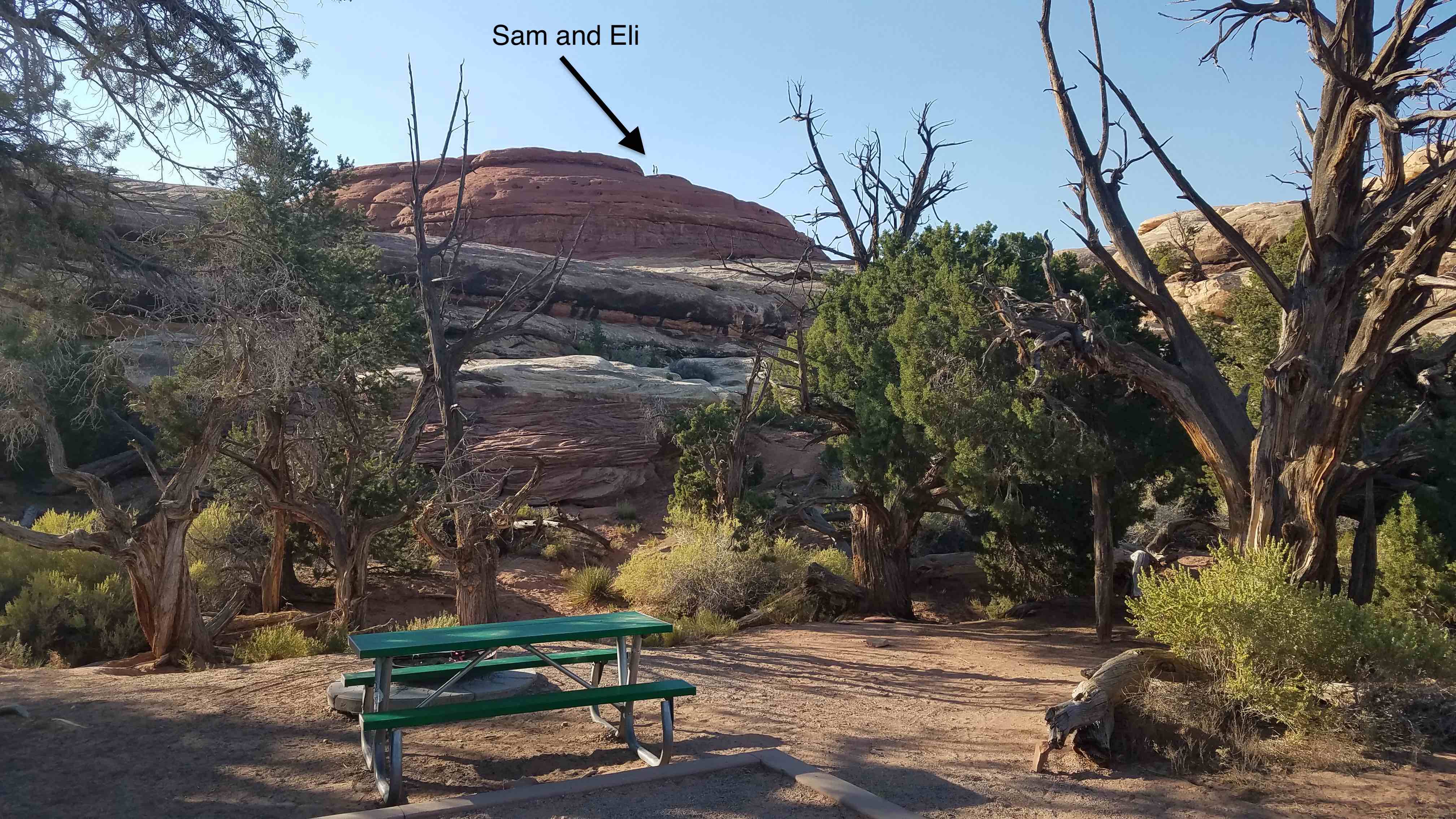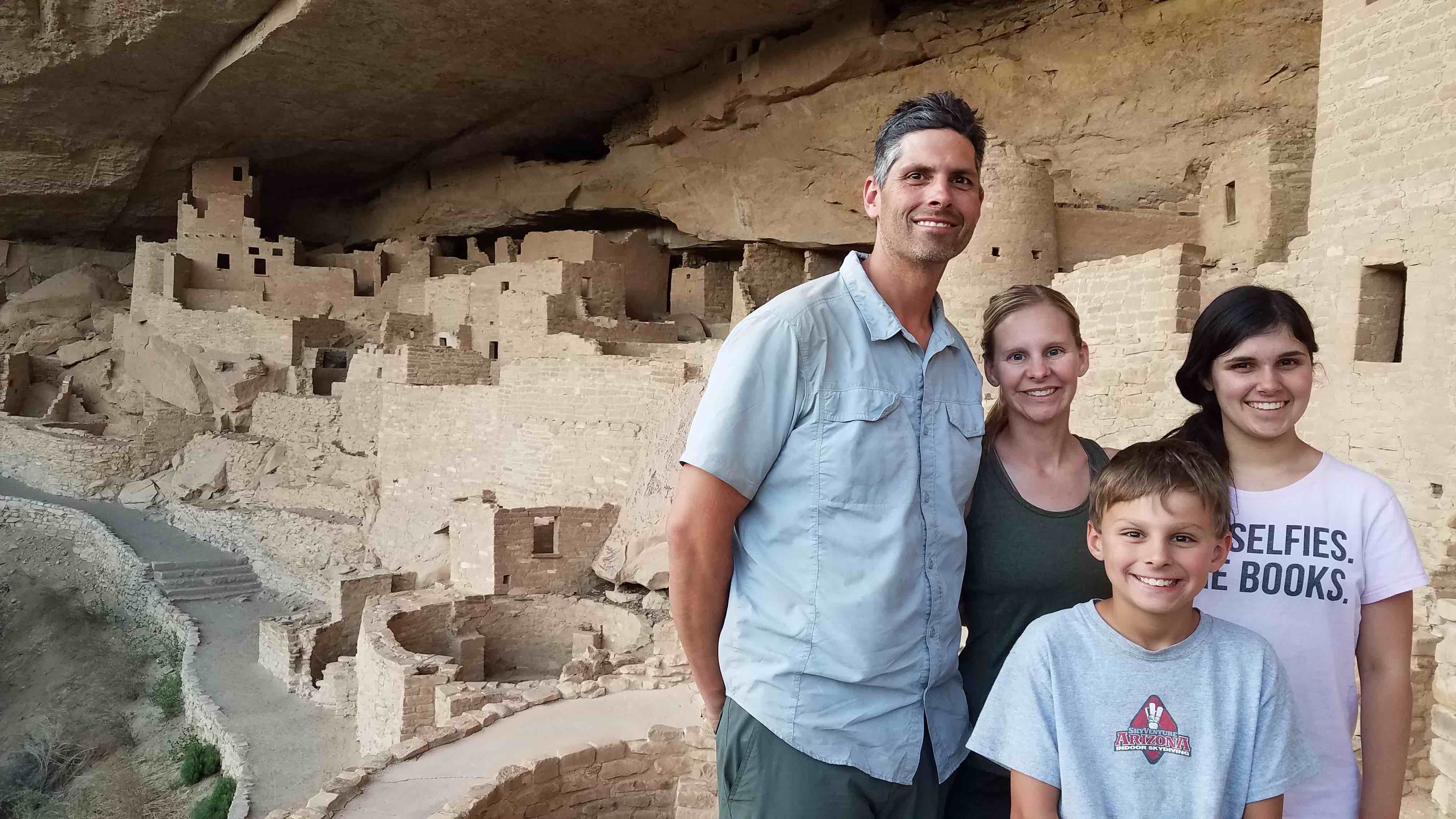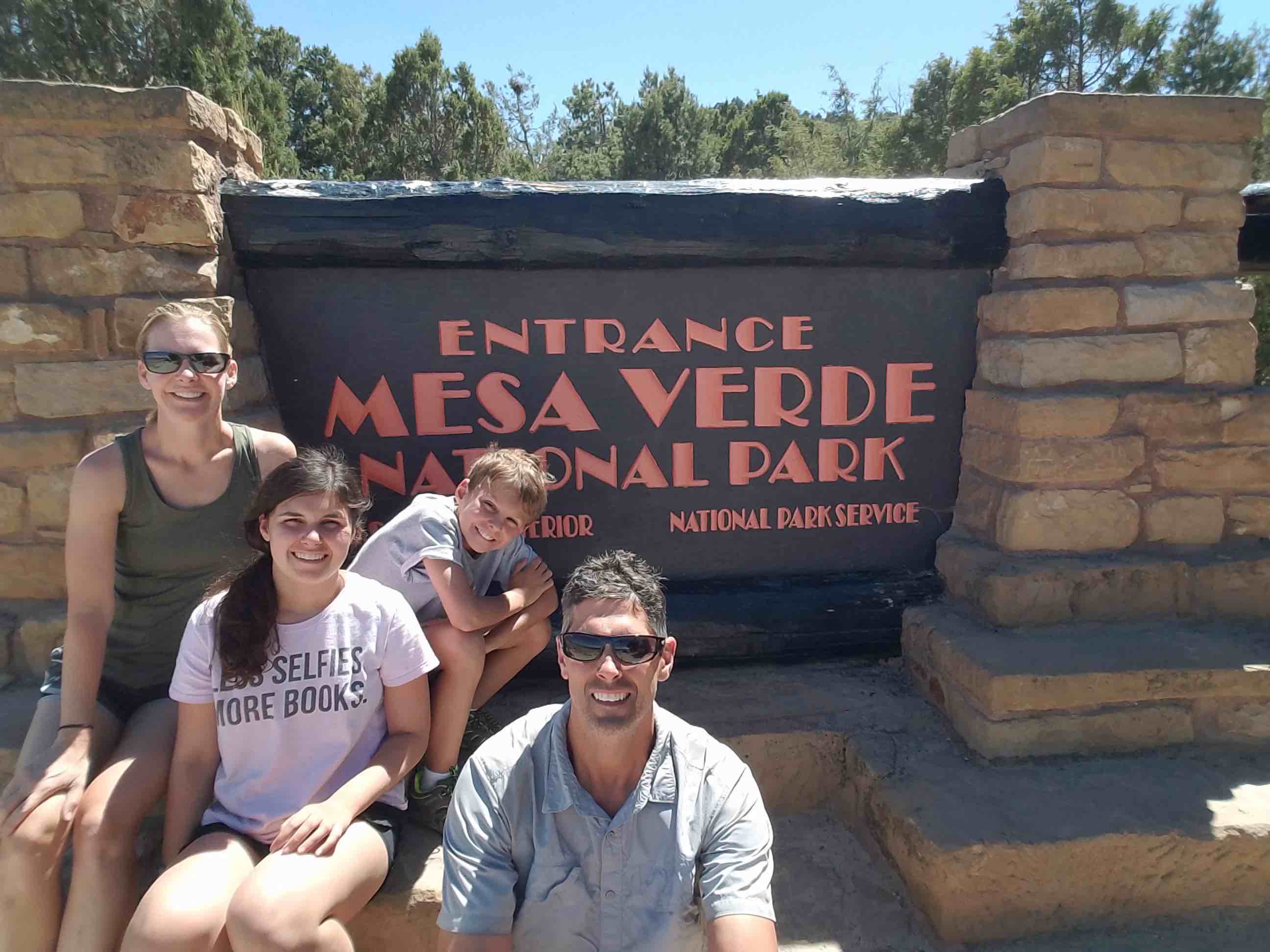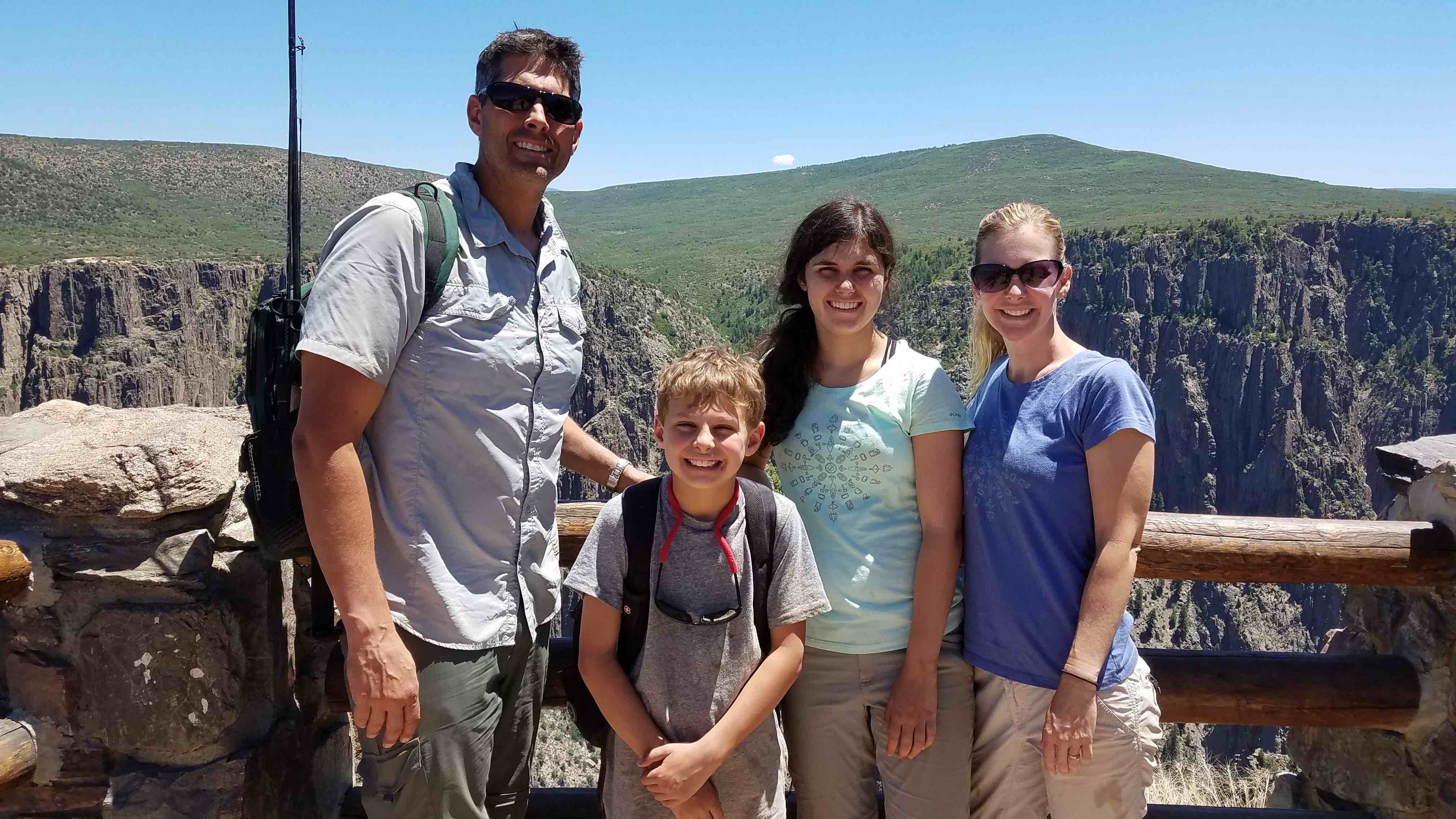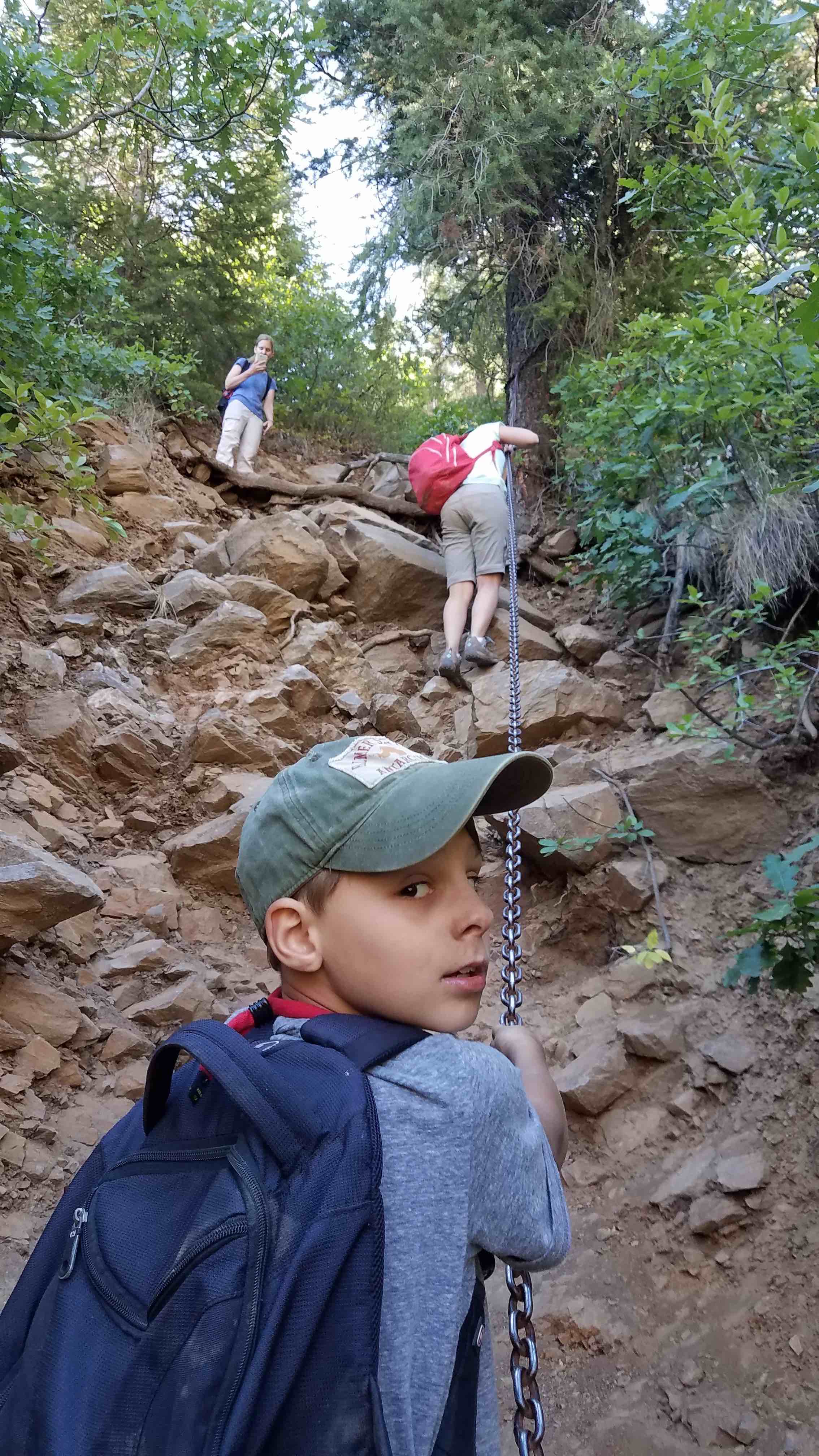The Black Hills of South Dakota let us explore Wind Cave National Park and Mount Rushmore National Monument. We started our exploration with a candlelight tour of Wind Cave, which simulated what it would have been like to explore the cave as visitors did in the 1890s. Sixteen-year-old Alvin McDonald was the earliest explorer of the cave. He mapped several miles of the cave and left a detailed daily journal of what he found. The prominent features in the cave are boxwork, popcorn and frostwork. We weren’t allowed to take any pictures on this two-hour, moderately strenuous tour, but hopefully we will remember how intricate the features were. Following our cave tour we decided to drive around and look for wild animals in the park. After many miles of driving around the rolling grasslands, we saw pronghorn antelope, prairie dogs, coyote and many, many bison.
From there we headed to Mount Rushmore. I was really looking forward to seeing the memorial and when we arrived, Eli became extremely excited. At first we didn’t understand why he was so elated. It turned out that he didn’t realize Mount Rushmore was the mountain with president faces carved into it and was expecting to see just another mountain! We visited the museum and walked the trail to see the presidents but unfortunately, just as the night lighting program was about to begin there was an plethora of lightning in the near distance and an impending storm. They cancelled the program but still illuminated the faces of the presidents who represented the birth of the nation, expansion, unification, and conservation. We had a fabulous time in the beautiful black hills seeing the animals, Wind Cave and Mount Rushmore!

